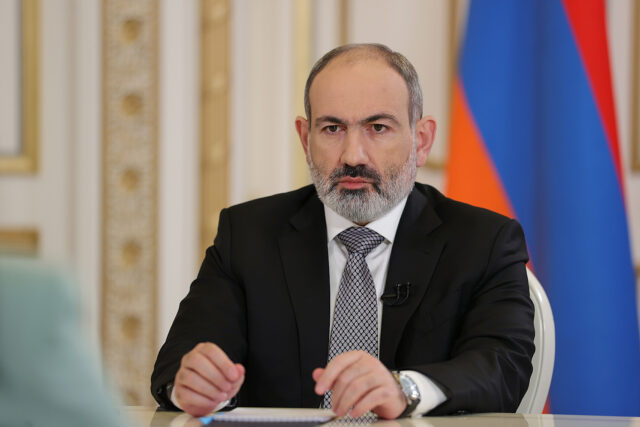
Yerevan’s Resettlement of Armenian Refugees in Zangezur Creates New Flashpoint
Publication: Eurasia Daily Monitor Volume: 20 Issue: 192
By:

Yerevan is seeking to resettle some of the more than 100,000 Armenians who fled Karabakh following the restoration of Azerbaijani control there to Armenia’s Syunik Oblast, according to Yevgeny Mikhailov, a Russian specialist on international conflicts (Svpressa.ru, December 10). The region, sandwiched between Azerbaijan proper and the Azerbaijani exclave of Nakhchivan, is referred to by many as the Zangezur Corridor. The Armenian government’s choice to resettle the refugees here is likely because the Syunik region has been economically depressed for some time despite Yerevan’s efforts to boost investment (News.am; Arka.am, November 24). Mikhailov does not provide a specific number, but any addition to the Armenian community there—estimated at just over 130,000 in a region of 4,500 square kilometers (Reliefweb.int, accessed December 20)—at the very least threatens the signing of any peace agreement between Yerevan and Baku and risks igniting a broader war (see EDM, October 11).
Mikhailov’s words may simply be part of an effort to destabilize the situation and prevent Baku and Yerevan from reaching a peace agreement (Svpressa.ru, December 10). That approach would be fully consistent with Moscow’s “divide and rule” tactics in the South Caucasus and elsewhere. However, the influx of more than 100,000 Armenians from Karabakh after Azerbaijan’s victory has been a heavy burden for Prime Minister Nikol Pashinyan. The Armenian government hopes to settle at least some of the refugees outside Yerevan lest they be mobilized by those who oppose the Pashinyan government and its increasingly anti-Russian position (see EDM, February 9). Against this backdrop, the report that the current regime is encouraging at least some refugees to settle in Syunik Oblast is quite plausible, especially given the consideration that additional Armenians in the region could help Yerevan maintain control.
The resettlement of refugees to Syunik may further outrage Baku. The Azerbaijani government already views the prospect of such a development as yet another tactic by Yerevan to avoid following through on its promises to open transport routes running through the region following the end of the Second Karabakh War in November 2020 (Kremlin.ru, November 10, 2020). Azerbaijani President Ilham Aliyev has even suggested that Azerbaijan may have no option but to force the Zangezur Corridor open to connect with Nakhchivan (see EDM, October 11). The situation has led some Russian officials to argue that rising tensions in Syunik/Zangezur require that Yerevan accept a Russian military presence or risk losing this region as well (TASS, October 11). As a result, Zangezur, already a cockpit of conflict that some have compared to the Danzig Corridor (Vpoanalytics.com, September 27), is becoming even more explosive.
Azerbaijan’s recent victory in Karabakh and earlier incursions suggest that Baku would be successful if it moved militarily on Zangezur. In 2021, Azerbaijani forces invaded Armenia’s Syunik Oblast and seized 5 percent of its territory according to Yerevan but far more than that according to local residents (Eurasianet, May 14, 2021). The Armenian government has since militarized the adjoining border areas, but there is little reason to believe that Armenia could resist a major Azerbaijani thrust, especially if it were supported by Turkey. In hoping to avoid a conflict that would draw in other powers, including Iran, the West has pushed hard for the conclusion of a peace agreement between Yerevan and Baku. Many governments are expressing the hope that such an accord will be signed soon (see EDM, December 18).
Some observers doubt that the signing of a peace agreement would end the threat that the Zangezur Corridor poses. On the one hand, both Baku and Ankara remain skeptical that Armenia will live up to its commitments on opening a corridor through Zangezur or that a transit route through Iran would be an acceptable alternative given Tehran’s differences with both Turkic states (Window on Eurasia, November 19). On the other hand, Yerevan has concerns regarding Baku’s repeated statements about Zangezur being historically part of Azerbaijan (Riddle Russia, November 25, 2021; Kommersant, October 26).
Pashinyan highlighted the risks associated with Zangezur in an interview on December 20 with Armenian Public Television (ArmInfo, December 20). He asserted that all Western proposals for a peace settlement in the past were predicated not on finding a solution to the conflict but rather on managing its continued existence. The Armenian premier declared that there is “only one option” that would allow all parties to say the conflict has been resolved. In it, Yerevan would “surrender” Syunik or at least part of it to Azerbaijan, and Baku in turn would allow Armenia to annex Karabakh. Such a swap was first proposed by this author in 1992 and was christened the “Goble Plan” (Radio Free Europe/Radio Liberty, June 8, 2000; Tufts.edu, accessed December 20). The plan attracted some support in Azerbaijan and Turkey but was opposed by Russia, Iran, and Armenia, each for its own reasons, and by most of the international community, which opposed border changes.
For Armenia, the issues of Karabakh and Zangezur are very much interlinked. Pashinyan’s words are a clear indicator of Yerevan’s position on the connections between the two regions. Given that Azerbaijan has restored control over Karabakh and likely has the military capacity to seize Zangezur if it chooses to do so, there is little reason for anyone—especially any Armenian leader—to be talking about a territorial swap, even as an historical issue. This does not mean that Baku will move on the corridor anytime soon, but it does emphasize that talk of peace between Armenia and Azerbaijan is premature until the future of Syunik-Zangezur is worked out. If that does not happen, then any peace accord signed now would prove to be far less significant and prone to a breakdown in the near future.



